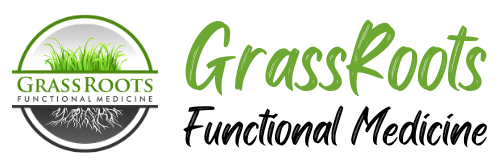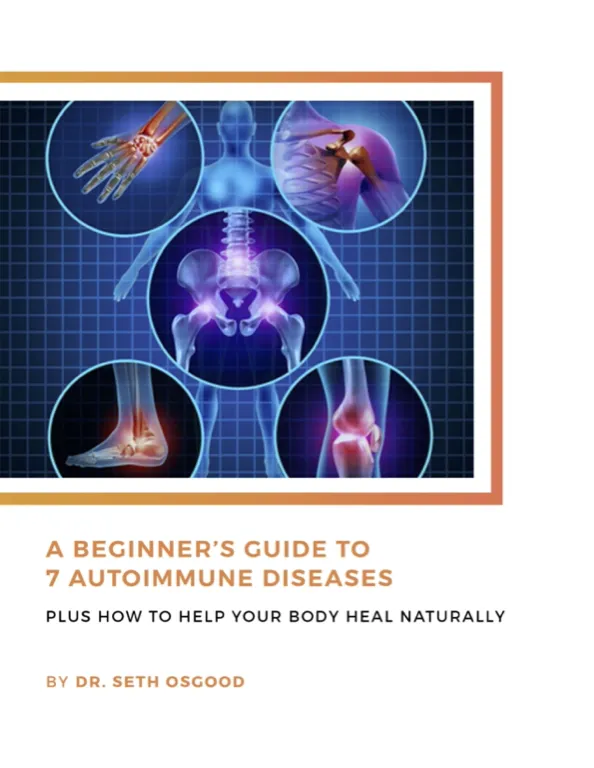If you’re a woman of any age, estrogen dominance should be on your radar.
This hormone imbalance is incredibly common, usually undiagnosed, and comes with frustrating symptoms and serious risks.
Although genetics can influence estrogen dominance, environmental factors are more often to blame. Fortunately, there are many simple dietary and lifestyle changes that can dramatically reduce your risks.
What is Estrogen Dominance?
Estrogen dominance occurs when your estrogen levels are too high relative to progesterone.
Normally your liver packages up any excess estrogen and excretes it through your bowels. But if you’re dealing with poor detoxification, gut imbalances, chronic stress, or exposure to endocrine-disrupting toxins, your levels can become too high.
This imbalance can lead to symptoms such as:
- Weight gain in the waist, hips, and thighs
- Fatigue
- Increased PMS symptoms
- Heavy or irregular periods
- Low libido
- Mood swings, anxiety, and depression
- Hair loss
- Ovarian cysts
- Fibrocystic breasts
Estrogen dominance can increase your risk for breast and uterine cancer, thyroid dysfunction, autoimmune disease, and Candida overgrowth.
7 Strategies to Eliminate Estrogen Dominance
If you’re living with the symptoms above, want to prevent them, or are honestly just a woman living in our modern environment, I recommend using these tips to decrease your risks!
1. Make Sure You’re Pooping Regularly
Excess estrogen exits your body via your bowel movements. If you’re not pooping regularly, it can be reabsorbed back into your body. To ensure that you have at least one bowel movement a day, drink plenty of water and up your fiber intake by eating chia seeds, flax seeds, and psyllium, plus lots of vegetables and fruits.
Check out this post for more tips to alleviate constipation and consider trying RootFix Colon Clear.
2. Choose Organic Meat and Dairy
Conventionally raised cows, pigs, and chickens are given growth hormones to make them grow larger and to increase dairy production. Studies show that these hormones make their way into our bodies where they can disrupt the delicate balance of our doctrine system.
Choose organic, grass-fed, and free-range meats when possible. Many people feel best when avoiding dairy altogether, but if you tolerate it well or want to know if you do, check out this article for tips on the safest and healthiest forms of dairy to try.
3. Eat More Cruciferous Vegetables
Veggies like broccoli, kale, brussel sprouts, bok choy, cabbage, and cauliflower have two big benefits for estrogen balance.
First, they support liver function and detoxification so your liver can package up estrogen and excrete it through your stool. Second, they promote safer estrogen metabolism pathways to avoid the metabolites linked to breast and uterine cancer.
4. Clean Up Your Personal Care Routine
Cosmetics, skincare products, and hair care are a major source of xenoestrogens. These chemicals mimic estrogen and alter your body’s internal feedback loops that regulate hormone levels.
As with food, the fewer the ingredients the better when it comes to choosing clean products.
Read ingredient labels closely and avoid products with:
- Parabens – methylparaben, ethylparaben, propylparaben, butylparaben, and anything else ending in -paraben
- Phthalates – DEP, DBP, DEHP, and artificial fragrances
- Sulfates – SLS and SLES
The good news is that xenoestrogens don’t accumulate in the body. So once you switch to safer products, they exit your system fairly quickly.
5. Reduce Stress and Get More Sleep
I know, I know, this one is easier said than done, but it’s absolutely critical! Letting go of stress and getting 7-9 hours of restorative sleep a night will improve estrogen balance, thyroid health, immune function, mood balance, and so much more.
You can start small by choosing one relaxation technique to practice every day. Using 4-7-8 breathing, going for a walk, taking a relaxing bath, or writing down 5 things you’re grateful for are all great options. It doesn’t have to be elaborate or time consuming, just a few minutes a day can make a big difference!
To support better sleep, start by setting a consistent bedtime and avoiding screens in the last hour before lights out. Try not to drink alcohol as that can actually make your sleep worse.
6. Break a Sweat
Exercise is an excellent form of detoxification as toxins exit your body via sweat. It also increases sex hormone-binding globulin (SHBG), which binds to estrogens and deactivates them.
As an added bonus, exercising outside in natural light also helps to relieve stress, improve sleep, and establish a healthy circadian rhythm.
Infrared sauna therapy is another great option if you’re not feeling up to exercising or you need extra detox support.
7. Add in Hormone-Balancing Supplements
Lastly, you can use targeted nutraceuticals to support your body’s natural ability to clear excess estrogen. EstraShield combines DIM (diindolylmethane) with Vitamin D3, Vitamin E, Calcium D-Glucarate, Green Tea Extract, HMRlignan™, and Trans-Resveratrol to help your body detoxify and neutralize harmful estrogen metabolites and xenoestrogens.
I want to end by encouraging you that if you feel like your hormones have taken control and are derailing your life each month, there ARE solutions! Sometimes it takes a little more fine-tuning with testing, nutrition, and lifestyle strategies, but you can get there with a functional approach. My team and I are here to help if you’re ready for personalized guidance.
About the Author: Dr. Seth Osgood is a Doctor of Nursing Practice, Board Certified Family Nurse Practitioner and Institute of Functional Medicine (IFM) Certified Practitioner. Dr. Osgood received his post-graduate training in Functional Medicine through the IFM and from working with Dr. Amy Myers. He has helped people from around the world improve their health utilizing a Functional Medicine approach.
Want to work with Dr. Osgood and the GrassRoots team? Become a patient in our West Lebanon, New Hampshire Functional Medicine clinic, our Burlington, Vermont Functional Medicine clinic, or our Austin, Texas Functional Medicine clinic!






0 Comments